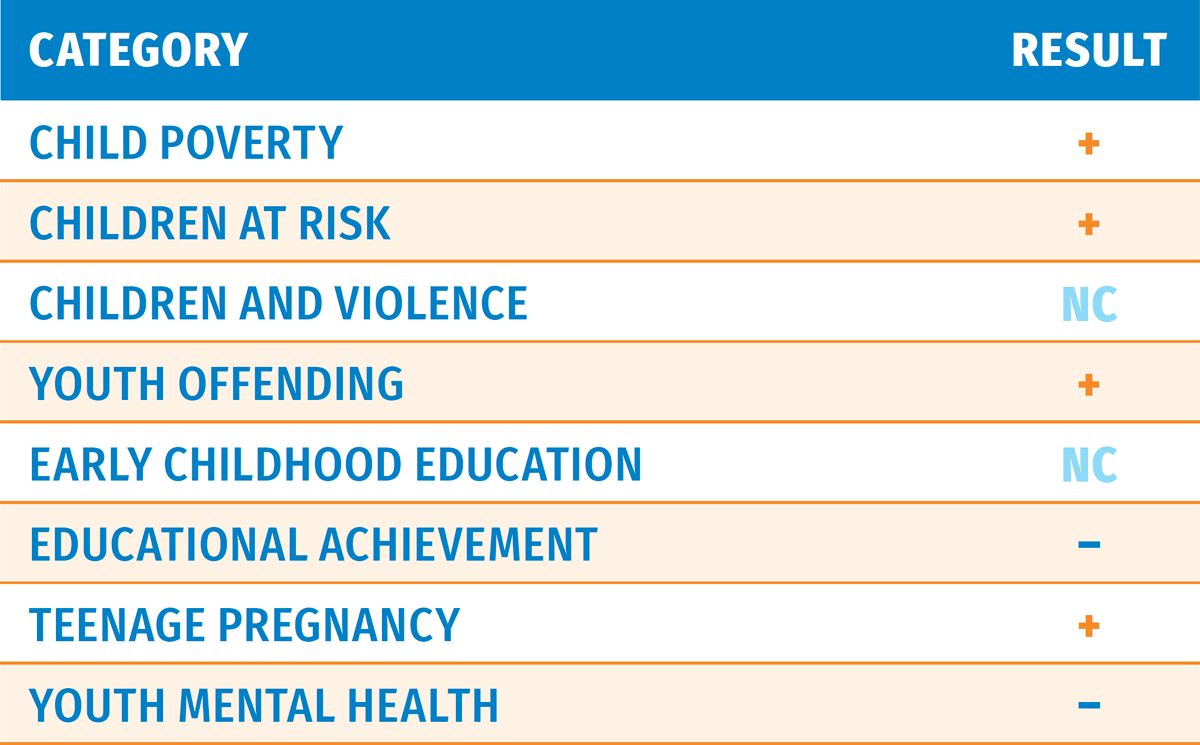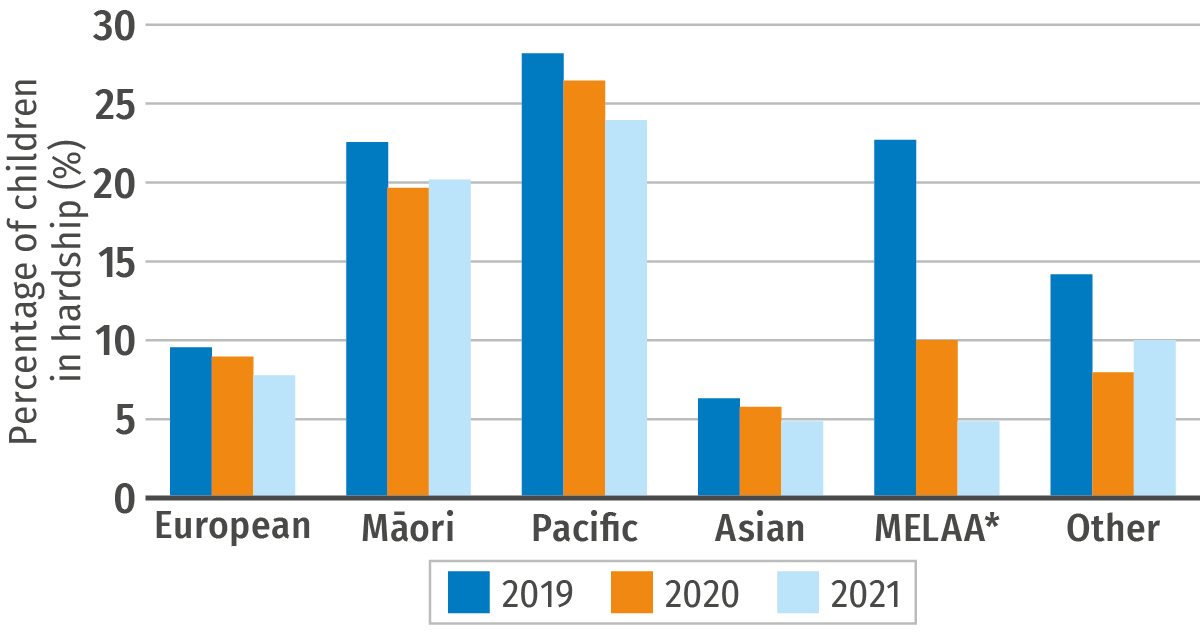You are here
Children and Youth
How well the children and young people are doing in this country tells us a lot about our wellbeing as a nation overall. They represent the future potential of our land, but they also rely on the decisions of others around areas such as education, housing, health and household income.
Percentage of children in material hardship by ethnicity
Child poverty is a key indicator of child wellbeing. The continued overall decline in levels of child poverty and hardship up to mid-2021 is a genuine achievement throughout the Covid-19 pandemic. Poverty rates however remain too high. The Salvation Army and other community organisations still face levels of need above pre-Covid-19 levels. Disparities in child poverty rates are high for Pasifika, Māori and disabled children and a focused effort to further reduce child poverty is needed if government poverty reduction targets are to be achieved.
Proportion of young people reporting high or very high psychological distress (NZ Health Survey 2022)
The overall level of psychological distress among young people is rising, but despite this the youth suicide rate fell again this year, although it remains high compared with similar countries.
Positive trends in reducing teenage pregnancy rates are continuing. The infant mortality rates are low, with the rates for Māori and non-Māori close to parity in 2022.
Youth offending continues to decline (despite headlines about ram raids), highlighting the importance of sound analysis to contribute to the public debate about youth crime.
Children and young people are less likely to be offenders than they are to be victims of crime, as the growing figures for violent offending against children suggest. Reports of concern about potential child abuse and the numbers of substantiated child abuse cases were much lower in the year to June 2022, but the extended Covid-19 restrictions during that time also reduced the opportunities for identifying and reporting concerns about abuse.
Education outcomes are showing concerning trends after three years of Covid-19 disruption, and this will have lasting impacts for many, with school attendance rates and achievement rates worsening.
Proportion of students leaving school with NCEA Level 1 or higher
Sections: Home | Introduction | Children & Youth | Work and Incomes | Housing | Crime and Punishment | Social Hazards | Māori Wellbeing
Data: Interactive Dashboard
Download State of the Nation: Full report | Summary document



